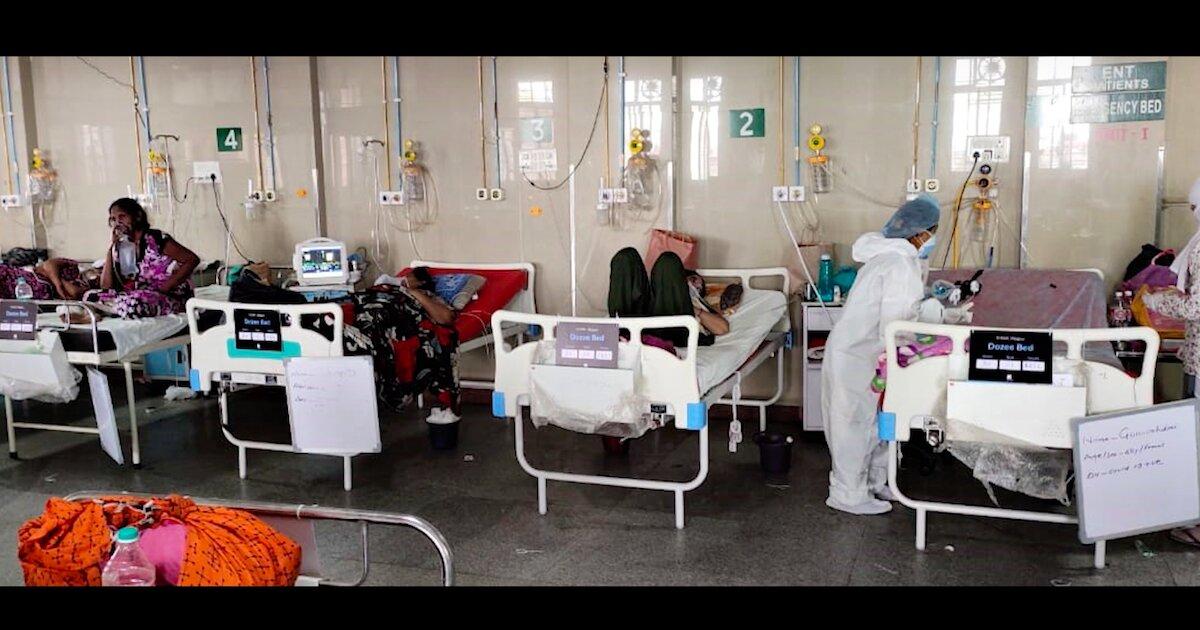Hospital beds are more than just places to sleep. They are crucial components in medical care, offering enhanced comfort, safety, and customized features for patients with varying needs. From adjustable settings to smart technologies, hospital beds today are designed to serve patients better, from the elderly to those with specific medical conditions.
Market Size and Growth Forecast:
In 2022, the value of the India hospital beds market was approximately USD 3.8 billion. This figure is expected to see a steady rise, growing at a Compound Annual Growth Rate (CAGR) of 7.20% from 2023 to 2031. By 2031, the market may touch an estimated USD 7.1 billion.
Key Market Trends:
Demand for Advanced Beds: As the number of medical facilities increases, so does the demand for advanced hospital beds. These beds come with modern features, from electronic controls to specialized mattresses, ensuring maximum patient comfort and safety.
Technological Advancements: The digital era has touched the realm of hospital beds. Smart beds equipped with IoT, remote monitoring, and automated adjustments offer improved patient outcomes and reduce manual tasks for healthcare staff.
Aging Population: India’s growing elderly population presents a unique challenge and opportunity. The elderly often require specialized care, leading to the need for beds tailored to their needs.
Investments in Healthcare: Both the government and private entities are investing in healthcare. As facilities grow, the demand for hospital beds increases in tandem.
Medical Tourism: India’s affordable yet high-standard medical care has attracted many international patients, subsequently driving the demand for quality hospital beds.
COVID-19’s Role: The pandemic highlighted the gaps in India’s healthcare system. The sudden need for beds led to greater investments in the sector, which is expected to have a lasting impact on market demand.
Market Segmentation:
By Product Type: The market offers a range of beds, including General Beds, ICU Beds, Pediatrics Bed, and others.
By Technology: Beds vary based on technological sophistication – Manual, Semi-Electric, and Electrical.
By Application: The market caters to both Intensive and Non-Intensive Care.
By Treatment Type: From Acute Care to Long-term Care, hospital beds serve diverse medical needs.
By End User: Apart from hospitals, beds are also used in Home Care Settings and other institutions.
By Region: This report focuses on India, but globally, the market spans North America, Europe, and more.
Regional Insight on India:
India, with its vast and diverse population, has varied healthcare needs across regions. Urban areas, with their advanced medical facilities, tend to demand more technologically equipped beds. In contrast, rural areas, which are still developing their healthcare infrastructure, might have a higher demand for basic bed types.
Government Involvement:
The Indian government has been proactive in enhancing the nation’s healthcare infrastructure. From funding schemes to direct investments in public healthcare facilities, the government’s role has been pivotal in driving the demand for hospital beds.
Market Development and Future Insights:
As healthcare becomes a focal point in India, market players are continuously innovating. Leading companies like Stryker India Pvt Ltd and Godrej Interio are making significant advancements, ensuring the hospital beds market remains dynamic and forward-looking.
Key Market Players:
Prominent companies shaping the market include:
Midmark India Pvt. Ltd
Godrej Interio
Stryker India Pvt Ltd, and more.
Their roles encompass everything from research and development to distribution, ensuring the hospital beds market in India remains vibrant and meets the needs of its vast patient population.
Challenges and Opportunities:
The Indian hospital beds market, while promising, also faces its set of challenges:
Infrastructure: Many regions, especially rural areas, still lack the necessary infrastructure to accommodate advanced hospital beds. The disparity between urban and rural healthcare facilities is evident, and bridging this gap is essential.
Cost Factor: Advanced beds with cutting-edge technologies are expensive. Making them affordable and accessible to all strata of society is crucial.
Maintenance: Technologically advanced beds require regular maintenance. There is a need for trained professionals who can manage and repair these sophisticated beds.
However, these challenges present numerous opportunities:
Training Programs: With the rise in technologically advanced beds, there’s a golden chance for creating training programs for maintenance, creating jobs and ensuring the longevity of the beds.
Local Manufacturing: Encouraging local manufacturers can reduce costs, boost the economy, and make beds more accessible.
Research and Development: Investing in R&D can lead to the invention of cost-effective, durable, and patient-friendly bed models, suitable for the varied Indian market.
Sustainability and Eco-friendliness: As the world moves towards sustainability, the hospital bed market can play its part. There’s potential for beds made from sustainable materials, which are durable and environmentally friendly. Such initiatives can also make the market more appealing to the globally conscious consumer.
Customization based on Region and Culture:
India is a country with many different customs and ways of life. Customizing hospital beds based on regional needs and cultural nuances can give an added advantage. For instance, beds tailored for maternity care can incorporate regional postnatal care practices.
Digital Integration and Data Analysis:
The future is digital. Hospital beds integrated with digital health records can provide real-time patient data, assisting in better care. Additionally, data analysis can offer insights into patient recovery patterns, bed usage rates, and more, aiding in efficient hospital management.
Collaborations and Partnerships:
Strategic collaborations between bed manufacturers and tech companies can lead to the rapid integration of advanced technology in bed designs. These partnerships can result in beds that are not just comfortable but also smart, adjusting to patient needs using Artificial Intelligence and Machine Learning.
The Road Ahead:
The journey for India’s hospital beds market is layered, filled with challenges but abundant in opportunities. As technology progresses and healthcare becomes more patient-centric, there’s a bright future ahead. Every bed added to a hospital isn’t just a product but a step closer to better healthcare for all. With the right strategies, innovations, and a touch of empathy, India’s hospital beds market can set global standards in patient care.



